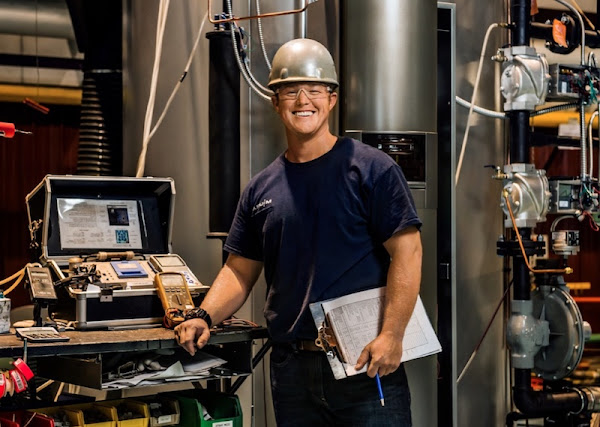All fired boilers that I have worked with have oxygen analyzers on their flue gas. Combining the oxygen concentration of the flue gas with the front-end air-to-fuel ratio can be very useful for quick troubleshooting. If you need a refresher on air-to-fuel ratio.

The general concept is to calculate the expected concentration of oxygen in the flue gas from the air-to-fuel ratio and to compare it to the analyzer value. As I have spent more time in engineering and operations, I have seen more and more value in SIMPLE engineering checks.
Here’s an example:
Here’s a table of a few values for natural gas air-to-fuel and expected flue gas oxygen to get you started. I recommend memorizing a couple key values such as 10, 12, and 14. Then you can interpolate for nearby values.
The purpose of this is to continue to improve your engineering “feel” and ability to help troubleshooting in the moment.
There will come a time (if it has not already happened for you) that you need to provide support in the moment, which does not allow for you to go back to your desk and crunch numbers for a couple hours. A comparison between air-to-fuel ratio and flue gas oxygen is one simple check for your troubleshooting toolbox.

The general concept is to calculate the expected concentration of oxygen in the flue gas from the air-to-fuel ratio and to compare it to the analyzer value. As I have spent more time in engineering and operations, I have seen more and more value in SIMPLE engineering checks.
Here’s an example:
- The boiler in question, we’ll call it B-100 is firing with 96 MSCFH of combustion air and 8 MSCFH of natural gas (methane). The flue gas oxygen analyzer is reading 9.1% oxygen.
- The question is, does this make sense?
- Calculate the air-to-fuel ratio: 96 / 8 = 12.0
- Calculate the expected oxygen in the fuel gas based on the air-to-fuel ratio and stoichiometric air-to-fuel ratio of methane, which is 9.5. This is left as an exercise to the reader, mainly because of the post character count! The result is 4.4% O2 in the flue gas.
- Compare the expected O2 in the flue gas with the actual value being reported by the analyzer, which for this example was 9.1%.
- How close are the two values? I would say there is significant deviation between 4.4% and 9.1%. A work order for the analyzer group to check out the O2 analyzer could be useful. You could also have the combustion air flow indication calibrated.
Here’s a table of a few values for natural gas air-to-fuel and expected flue gas oxygen to get you started. I recommend memorizing a couple key values such as 10, 12, and 14. Then you can interpolate for nearby values.
| Air-To-Fuel Ratio, Vol | Flue Gas O2%, Dry |
|---|---|
| 10 | 1,1% |
| 12 | 4,8% |
| 14 | 6,8% |
| 16 | 8,5% |
The purpose of this is to continue to improve your engineering “feel” and ability to help troubleshooting in the moment.
There will come a time (if it has not already happened for you) that you need to provide support in the moment, which does not allow for you to go back to your desk and crunch numbers for a couple hours. A comparison between air-to-fuel ratio and flue gas oxygen is one simple check for your troubleshooting toolbox.
Comments
Post a Comment